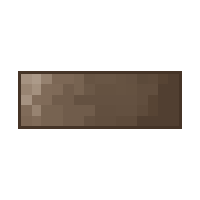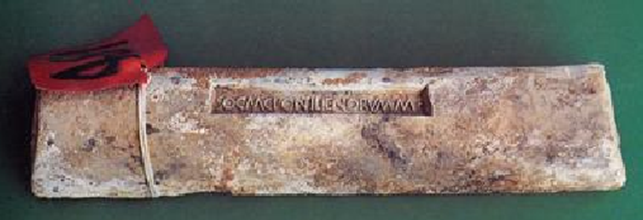
More than 2000 years old and for this reason is perfect for shielding experiments from natural radioactivity present in materials.
Lead is a heavy material, for this reason is used to shield the pshysics experiments from environmental radiations . The more the lead is ancient the more it is precius to the experiments since it diminishes its natural radioactivity. Lead is a radioactive element, or better one of its isotopes is radioactive: lead-210. Its decay is decreasing its quantity almost by a factor of 2 each 22 years.
In experiments in which very high sensitivity measurements have to be made, environmental radiation is an element of great disturbance, to be suppressed as much as possible. An effective way to do this is to surround the detectors with a screen of a very dense, heavy material, such as lead. But when the sensitivity of the experiment needs to be extreme, there is another problem ... the radioactivity of the screen itself (See)! In fact, normal lead is in part made up of its radioactive isotope, lead-210. This isotope has a "half-life" of 22 years, i.e. it decays so that every 22 years its quantity inside the lead is reduced by a half. So the older the lead, the more valuable it is for physics experiments. From this point of view the lead used to shield the CUORE experiment at the Laboratori Nazionali del Gran Sasso (LNGS) of the INFN is invaluable, because it comes from the wreckage of a Roman ship sunk more than two thousand years ago.
The wreck of a Roman ship, a navis oneraria magna, was discovered at the end of the 1980s off the coast of Sardinia. The ship which sank between 80 and 50 BC, on its way from Spain and probably headed for Rome with a load of about two thousand lead ingots of 33 kg each, destined for the production of water pipes and items for military use. In addition to age, these bars have a further added value. The Romans in fact extracted lead separating it from silver, a process that also allowed the removal of most of the uranium contamination, which is the element from which radioactive lead-210 arises. About 230 of the recovered ingots were transported to the LNGS to be used in physics experiments. Each of these ingots had the mark of the ancient owners on the upper part, inscriptions of archaeological interest that were removed and delivered for exhibition at the National Archaeological Museum of Cagliari. The analyses performed at the LNGS showed the extraordinary quality of this lead, in which the presence of lead-210 is more than a hundred thousand times lower than in modern lead. The ingots were melted to get the segments needed to assemble the shield for the CUORE experiment. This screen, six centimetres thick, has a weight of five tons and is cooled (see) to a temperature of about 4 K (four degrees above absolute zero).

Fig.1 One of the lead ingots found in the wreck of the Roman ship. In the middle the inscription bearing the owner's trademark is clearly visible (Image Credits: LNGS)

Discover the experiments and help the alien to get back home!
Play now